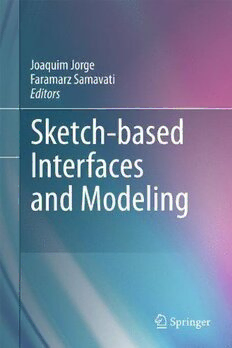
Sketch-based Interfaces and Modeling PDF
416 Pages·2011·17.485 MB·English
Most books are stored in the elastic cloud where traffic is expensive. For this reason, we have a limit on daily download.
Preview Sketch-based Interfaces and Modeling
Description:
The field of sketch-based interfaces and modeling (SBIM) focuses on developing methods and techniques to enable users to interact with a computer through sketching - a simple, yet highly expressive medium. SBIM blends concepts from computer graphics, human-computer interaction, artificial intelligence, and machine learning. Recent improvements in hardware, coupled with new machine learning techniques for more accurate recognition, and more robust depth inferencing techniques for sketch-based modeling, have resulted in an explosion of both sketch-based interfaces and pen-based computing devices.Presenting the first coherent, unified overview of SBIM, this unique text/reference bridges the two complementary research areas of user interaction (sketch-based interfaces), and graphical modeling and construction (sketch-based modeling). The book discusses the state of the art of this rapidly evolving field, with contributions from an international selection of experts. Also covered are sketch-based systems that allow the user to manipulate and edit existing data - from text, images, 3D shapes, and video - as opposed to modeling from scratch.Topics and features:Reviews pen/stylus interfaces to graphical applications that avoid reliance on user interface modesDescribes systems for diagrammatic sketch recognition, mathematical sketching, and sketch-based retrieval of vector drawingsExamines pen-based user interfaces for engineering and educational applicationsPresents a set of techniques for sketch recognition that rely strictly on spatial informationIntroduces the Teddy system; a pioneering sketching interface for designing free-form 3D modelsInvestigates a range of advanced sketch-based systems for modeling and designing 3D objects, including complex contours, clothing, and hair-stylesExplores methods for modeling from just a single sketch or using only a few strokesThis text is an essential resource for researchers, practitioners and graduate students involved in human-factors and user interfaces, interactive computer graphics, and intelligent user interfaces and AI.Dr. Joaquim Jorge is a professor at the Computer Science and Engineering Department (DEI) of the School of Engineering (IST) at the Technical University of Lisbon, Portugal.Dr. Faramarz Samavati is an associate professor at the Department of Computer Science at the University of Calgary, Canada.
See more
The list of books you might like
Most books are stored in the elastic cloud where traffic is expensive. For this reason, we have a limit on daily download.
